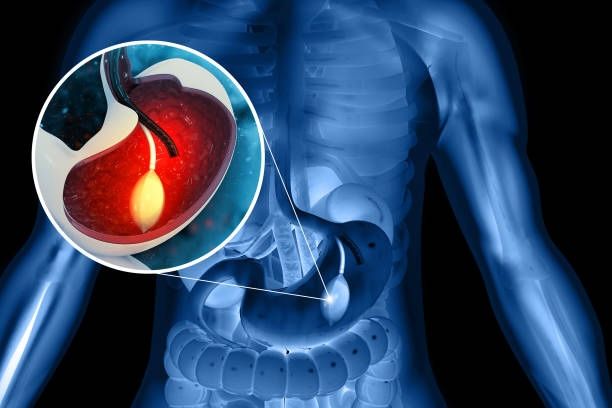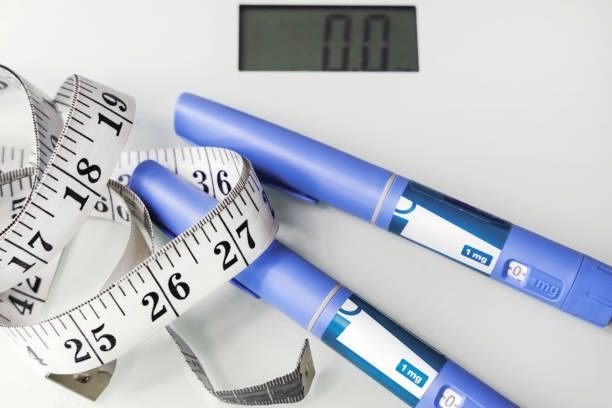Gastric Balloon Side Effects: What to Expect Long Term
Researching non-surgical weight loss procedures and the long-term side effects of the gastric balloon? Here’s what to expect if you go this route.

Bariendo Team
Team @ Bariendo
Long-Term Side Effects of The Gastric Balloon: Why It’s Crucial to Take it Off on Time
Counting calories and deleting food delivery apps from your phone helps you live a healthier life, but it doesn’t guarantee you’ll drop those extra pounds. If you’re tired of dieting cycles and aren’t willing to get traditional surgery, the gastric balloon procedure may be a good solution for you.
Since you’re exploring this option, you’re probably wondering about long-term side effects of the gastric balloon procedure. You may be asking yourself if it continues to be effective after you take it off, or if it comes with any health risks.
In this article, you’ll learn exactly how this minimal intervention works (backed by Bariendo medical experts), its side effects, benefits, and who shouldn’t undergo this procedure.
How Does the Gastric Balloon Work?
The gastric balloon is a non‑surgical procedure where doctors place a temporary plastic balloon in the patient’s stomach. Once in place, it is filled with sterile saline to moderate its size, which reduces appetite by occupying part of the stomach’s space.
This procedure happens through an endoscopy. It only takes 15 minutes and the person goes back home the same day. Interested in knowing what happens prior and after this minimal intervention? Read this guide about the before and after of the gastric balloon procedure.
Types of gastric balloons
There are different types of gastric balloons to choose from:
- The Orbera weight-loss balloon. This FDA-approved balloon is a widely used and well‑studied option. It’s filled with saline to create fullness and reduce intake, and it stays in the stomach for six months. The placement and removal happen via an endoscopic procedure.
- Spatz3 adjustable balloon. This balloon is also FDA-approved, and it’s unique, as doctors can adjust its volume after placement to improve comfort and adapt to your progress over time. It remains in place for up to eight months, giving a longer adaptation window.
- Obalon balloon system. Rather than one large balloon, Obalon uses a series of small, gas‑inflated capsules that are swallowed over several weeks. No sedation or endoscopy is required for placement, though removal still involves a short endoscopic procedure. The system stays in place for six months and is FDA approved.
- Allurion balloon. Delivered as a capsule swallowed in your provider’s office, the Allurion balloon is filled once it reaches your stomach. It naturally deflates after about sixteen weeks (four months) and passes through the digestive tract, so there are no endoscopies involved. It is not yet FDA approved, but it is already available in some systems like the NHS in the UK.
Consult with an expert on the types of gastric balloons before making a decision. Book a free consultation with Bariendo doctors.
Side Effects of the Gastric Balloon
While generally safe, the balloon, like any medical device, carries potential side effects, especially when you keep them for longer than recommended. Understanding all the attained risk helps you make informed decisions.
The short and long-term effects of the gastric balloon procedure include:
Early adverse effects
In the days following insertion, most patients experience:
- Nausea and vomiting
- Abdominal pain or cramping
- Overall discomfort, including fatigue or weakness
These are all expected because you’re introducing a new device into your body. However, these symptoms usually go away within the first few days. Your doctor should be able to prescribe medication to ease the discomfort.
Long-term symptoms
People often have misconceptions about the gastric balloon, which may include them feeling uncomfortable forever. This isn’t true because the balloon is removed in a period between six and 12 months.
However, some patients can experience persistent symptoms while having the balloon, including:
- Heartburn or gastric reflux
- Bloating or feelings of fullness
- Constipation or slowed bowel movements
- Odorous burping
Even less frequent, but serious, complications can occur when a person is not closely monitored or does not have the balloon removed on time. These include:
- Blue or green stool or urine (a sign of balloon leakage)
- Gastric outlet obstruction due to balloon deflation (1.5% risk)
- Gastric perforation (0.1%)
- Acute pancreatitis (from 0.006-5.56%)
Also, if the patient doesn’t maintain lifestyle changes, they’ll likely regain some weight. We like to think of this procedure as a jump starter. A little help for those struggling to lose those extra pounds, no matter how much they try.
By having a device that prevents you from overeating, you get naturally habituated to eating less. If the patient takes advantage of this aid, they’ll notice that once the balloon is removed, they won’t be eating as much as before, allowing them to maintain the results. Pairing this procedure with a dietician, can help achieve long-lasting and less frustrating weight loss.
Benefits of the Gastric Balloon Compared to Other Weight Loss Alternatives
The gastric balloon is an effective procedure for weight loss, but it comes with benefits and pitfalls. You’ve already seen the cons, but the pros of the gastric balloon include:
- Non‑surgical, quick, and outpatient. The device is placed via endoscopy, no incisions, general anesthesia, or hospital stay required. It takes about fifteen minutes.
- Proven effectiveness. People lose an average of 10-15% of their total body weight in a year, and it’s been proven to be 3.1x more effective than regular dieting and exercising.
- Supports long‑term maintenance. While some weight regain is common post‑removal, those who follow lifestyle changes tend to keep losing weight afterward.
- Fewer risks than surgery. Serious complications such as obstruction, perforation, or death (0.05%) are quite rare. Common side effects like nausea and pain affect about one third, but typically resolve quickly.
- Improves metabolic health. Weight loss with balloons reduces rates of metabolic syndrome, hypertension, diabetes, and lipid disorders. These benefits often persist for years after removal.
- More affordable and flexible than other procedures. Compared to endoscopic sleeve gastroplasty (ESG) or weekly semaglutide injections, the gastric balloon typically costs less and involves less ongoing commitment. Explore prices and financial options at Bariendo, we’re always transparent about how much the gastric balloon procedure costs.
Who Shouldn’t Have the Gastric Balloon?
Healthcare providers typically advise against gastric balloon placement for those with previous conditions as they have a higher risk of complications. These patients include the ones with:
- Active peptic ulcers
- Large hiatal hernia
- Blood‑clotting disorders
- Liver disease
- Substance‑use disorder
- Prior gastrointestinal surgery or structural abnormalities
What to do in Case of Gastric Balloon Complications?
If you experience severe symptoms, such as persistent vomiting, intense abdominal pain, signs of obstruction, or unusual color in stool or urine, you should immediately contact your healthcare provider. As we mentioned above, timely removal typically resolves the issues and avoids further health complications.
TL;DR: Is the Gastric Balloon Safe?
The gastric balloon is a powerful, non-surgical tool that helps patients kick-start weight loss while avoiding many of the downsides of traditional surgery. It is generally safe, temporary, adjustable, and effective.
However, introducing a new device into your body comes with potential side effects, especially if left in place too long. With expert guidance, disciplined follow-through, and timely care, patients can lose weight safely and establish enduring habits for long-term health.
To explore this solution in depth, we recommend booking an appointment with a specialized doctor in your area. At Bariendo, we have experts located across the country ready to answer all of your gastric balloon-related questions. Ready for a non-surgical approach to weight loss? Book a free consultation.

